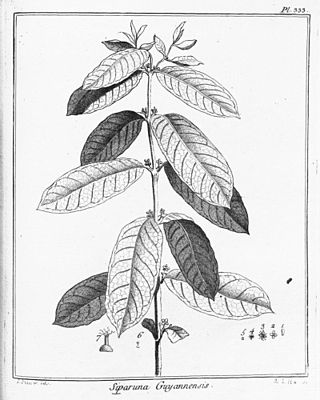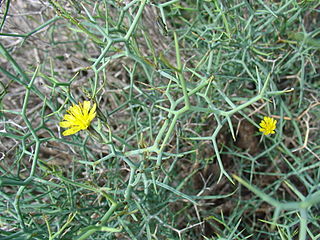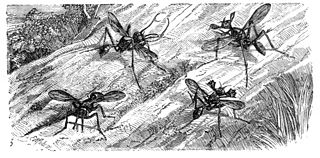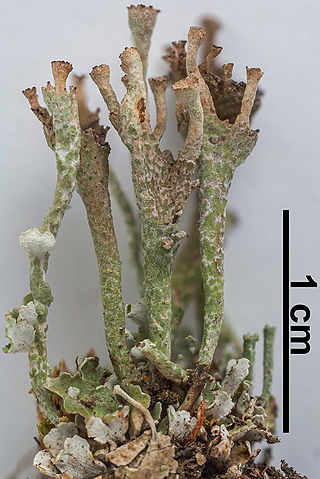
The Integrated Taxonomic Information System (ITIS) is an American partnership of federal agencies designed to provide consistent and reliable information on the taxonomy of biological species. ITIS was originally formed in 1996 as an interagency group within the US federal government, involving several US federal agencies, and has now become an international body, with Canadian and Mexican government agencies participating. The database draws from a large community of taxonomic experts. Primary content staff are housed at the Smithsonian National Museum of Natural History and IT services are provided by a US Geological Survey facility in Denver. The primary focus of ITIS is North American species, but many biological groups exist worldwide and ITIS collaborates with other agencies to increase its global coverage.

White band disease is a coral disease that affects acroporid corals and is distinguishable by the white band of exposed coral skeleton that it forms. The disease completely destroys the coral tissue of Caribbean acroporid corals, specifically elkhorn coral and staghorn coral. The disease exhibits a pronounced division between the remaining coral tissue and the exposed coral skeleton. These symptoms are similar to white plague, except that white band disease is only found on acroporid corals, and white plague has not been found on any acroporid corals. It is part of a class of similar disease known as "white syndromes", many of which may be linked to species of Vibrio bacteria. While the pathogen for this disease has not been identified, Vibrio carchariae may be one of its factors. The degradation of coral tissue usually begins at the base of the coral, working its way up to the branch tips, but it can begin in the middle of a branch.

Macrodontia cervicornis, also known as the sabertooth longhorn beetle, is one of the largest beetles, if one allows for the enormous mandibles of the males, from which it derives both of the names in its binomen: Macrodontia means "long tooth", and cervicornis means "deer antler". Measurements of insect length normally exclude legs, jaws, or horns, but if jaws are included, the longest known specimen of M. cervicornis is 17.7 cm; the longest known specimen of Dynastes hercules, a beetle species with enormous horns, is 17.5 cm, and the longest known beetle excluding either jaws or horns is Titanus giganteus, at 16.7 cm.

The staghorn coral is a branching, stony coral with cylindrical branches ranging from a few centimetres to over two metres in length and height. It occurs in back reef and fore reef environments from 0 to 30 m depth. The upper limit is defined by wave forces, and the lower limit is controlled by suspended sediments and light availability. Fore reef zones at intermediate depths 5–25 m (16–82 ft) were formerly dominated by extensive single-species stands of staghorn coral until the mid-1980s. This coral exhibits the fastest growth of all known western Atlantic fringe corals, with branches increasing in length by 10–20 cm (3.9–7.9 in) per year. This has been one of the three most important Caribbean corals in terms of its contribution to reef growth and fishery habitat.

The Phytalmiinae are a subfamily of tephritid fruit flies.

Siparuna is a genus of plants belonging to the family Siparunaceae. These aromatic evergreen trees and shrubs are found throughout the Neotropical realm. Over 70 species have been described.

Launaea is a genus of flowering plants in the family Asteraceae.

Phytalmia is a genus of tephritid or fruit flies in the family Tephritidae. The males of some species are noted for their hornlike projections on their heads, which are used for fighting.

Psammobates is a genus of tortoise erected by Leopold Fitzinger in 1835. This genus contains three species, all of which are indigenous to southern Africa.
The two-forked murex also known as the deer antler murex is a species of sea snail, a marine gastropod mollusk in the family Muricidae, the murex snails or rock snails.

Trachycladus is a genus of sea sponge belonging to the family Trachycladidae.

The Agariciidae are a family of reef-building stony corals. This family includes cactus corals, plate corals, and lettuce corals. Members of the family include symbiotic algae called zooxanthellae in their tissues which help provide their energy requirements.
Species 2000 is a federation of database organizations around the world that compiles the Catalogue of Life, a comprehensive checklist of the world's species, in partnership with the Integrated Taxonomic Information System (ITIS). The creation of Species 2000 was initiated by Frank Bisby and colleagues at the University of Reading in the UK in 1997 and the Catalogue of Life was first published in 2001. While administrators and member organizations of Species 2000 are located around the world, the secretariat is located at the Naturalis Biodiversity Center in Leiden, Netherlands.

Dactylotrochus is a genus of large polyp stony corals from the Red Sea and western Pacific Ocean. It is monotypic with a single species, Dactylotrochus cervicornis. It inhabits the deep sea and is believed to be azooxanthellate.
Spiralizoros cervicornis is a species of insect in the order Zoraptera. It was first found in Malaysia.
Cladococcus is a genus of radiolarians.

Cladonia cervicornis is a species of cup lichen in the family Cladoniaceae. It was first described by Swedish lichenologist Erik Acharius in 1799 as Lichen cervicornis. Julius von Flotow transferred it to the genus Cladonia in 1849. In North America, it is colloquially known as the ladder lichen or elk's-horn cup lichen.

Taumacera is a genus of leaf beetles in the subfamily Galerucinae. It contains about 70 species distributed in the Oriental realm. About 20 African species are also classified in Taumacera, but they may actually belong in a different genus.

Launaea cervicornis is a species of flowering plant in the family Asteraceae, native to the Balearic Islands. It is found exclusively in coastal shrublands, where it is a keystone species.
Phytalmia alcicornis also known as moose fly or antler fly, is a species of fruit flies in the genus Phytalmia. This species is native to Papua New Guinea.















